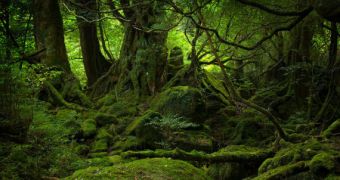Ashley Massey, a researcher from the Oxford University, recently explained that certain cultural beliefs are in fact beneficial to the wellbeing of the natural world, especially when it comes to keeping some forest areas safe from harm.
His speech was delivered at the annual meeting of the Association for Tropical Biology and Conservation in Bonito, Brazil, which takes place between 18-22 June 2012.
Ashley Massey argues that both in the West African country of Gambia and in Malaysian Borneo, most indigenous people refuse to explore the nearby woods.
The main reason for this refusal is the fear that they might find themselves face to face with mythical, dangerous creatures that it is best to keep away from.
Examples of such cultural superstitions are the dinosaur-like “Ninki-nanka” and the dancing animals commonly referred to as “Kopizo.”
It is only logical that, as long as the aforementioned locals do not even wish to approach the forests where these mythical beasts reside, neither are they going to start chopping down trees.
This means that, without the need for elaborate environmental laws, the woodland areas here are quite unlikely to be destroyed by the communities living nearby.
As Mongabay.com reports, similar cases of environmental protection that comes as a result of cultural superstitions are to be found in Brazil, where the Kamayura tribe is convinced that a two-headed invisible jaguar lives in some secluded forest areas.
By avoiding these parts of the woods, the locals provide the Brazilian wildlife with a proper ground for breeding, thus lending a helping hand to environmental protection without even being fully aware of it.
As ethnobotanist Mark Plotkin from the Amazon Conservation Team explains, “This was the Kamayura's way of saying that it was a protected area where hunting was not allowed.”
It is our belief that all of the above superstitions have to do with an innate respect for the natural world, and that perhaps, in our quest for sustainable development, we might even try and learn a few things from these communities.

 14 DAY TRIAL //
14 DAY TRIAL //